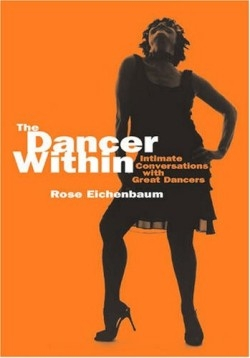The Dancer Within
Intimate Conversations with Great Dancers
Isadora Duncan once famously proclaimed, “To live is to dance.” In this volume, Eichenbaum’s thoughtful interviews illuminate the lives of forty dancers across a broad spectrum of the field, revealing why they chose dance and how it affected their lives. Ballet, modern, tap, jazz, musical theater, film, hip-hop, and avant-garde performers of all ages speak eloquently and candidly about what their art means to them.
The author, a dancer/dance photojournalist with a master’s degree from UCLA, took all the photos in the book, some of which approach fine art photography.
Though love of dance propelled all these dancers, their respective journeys took different paths. Ballet star Cynthia Gregory began dancing at a doctor’s suggestion, while ballerina Natalia Makarova felt she became a dancer by accident, entering the Vaganova School when it needed students due to low enrollment.
Some, like Liza Minnelli, were born into stage families who encouraged and supported their careers. Others fought parental disapproval. Donna McKechnie, famous for her Tony Award-winning performance in A Chorus Line, literally had to run away from home to pursue her career.
Several dancers felt dance became their salvation. Jazz dancer Chet Walker was severely dyslexic before this was classified as a disability. Dancing became his safe haven, a way to escape the label of “retarded.” Hip-hop dancer Mr. Wiggles (Steffan Clemente) came from a tough neighborhood, and speculated that he didn’t have dancing as an outlet, he might have been breaking into peoples’ homes.
Eichenbaum allows each interview to develop organically, resulting in surprisingly candid revelations. Modern dancer-turned-stage dancer Paula Kelly comments that for her, the modern dance scene “was too clannish and incestuous and didn’t reach out to enough people,” leading her into musical theater and Vegas club shows. And Mary Hinkson speaks honestly about her painful break with Martha Graham.
The dark side of dancing, having to perform when injured or sick, also comes out. Leslie Caron filmed most of An American in Paris while fighting mononucleosis, and ballet virtuoso Ethan Stiefel performed for months with both knees damaged.
But the common thread in all these narrations is the dancers’ deep love for their art in spite of the body-numbing hard work it demands of them. Riverdance star Jean Butler says it perfectly: “At the end of the day, I just want to dance.” Anyone who loves dance or musical theater will find these interviews engaging.
Reviewed by
Leah Samul
Disclosure: This article is not an endorsement, but a review. The publisher of this book provided free copies of the book to have their book reviewed by a professional reviewer. No fee was paid by the publisher for this review. Foreword Reviews only recommends books that we love. Foreword Magazine, Inc. is disclosing this in accordance with the Federal Trade Commission’s 16 CFR, Part 255.

